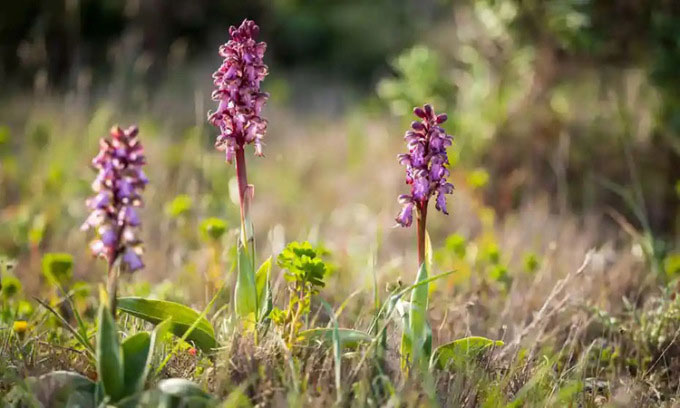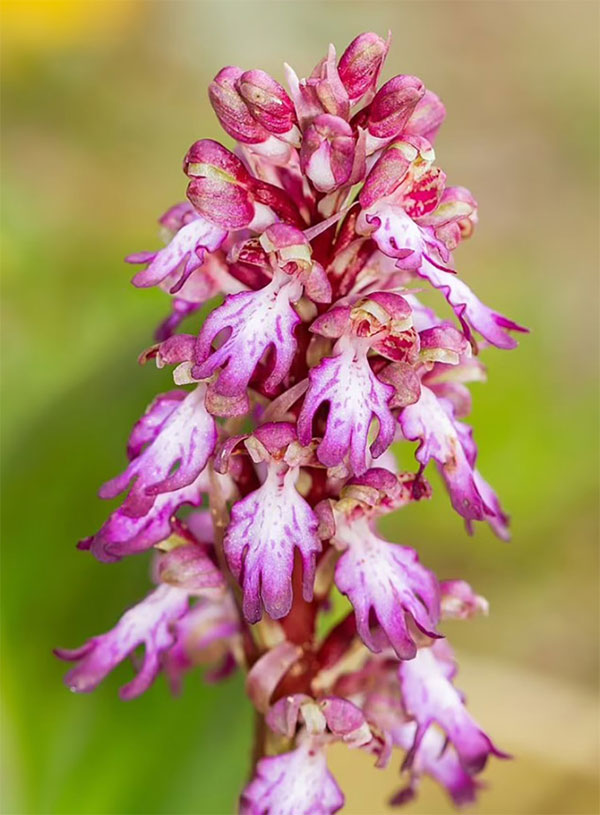While strolling down a slope near his home, a resident of Oxfordshire stumbled upon a stunning orchid that can reach heights of up to 1 meter.
Originating from the Mediterranean basin in Southern Europe, the giant orchid (Himantoglossum robertianum) is believed to be expanding its range northward due to climate warming, with records indicating its presence in France and the Netherlands.

Giant Orchid Himantoglossum robertianum. (Photo: Hemis).
According to a recent article published in the Guardian on April 1, biologists have confirmed that this beautiful flower has appeared for the first time in the wild in the United Kingdom. It was discovered by medical intern Hamza Nobes (29 years old) during a walk on a slope near his home in Didcot, Oxfordshire. The specific location has not been disclosed.
“It’s strange because a few weeks ago, I was looking at a book about European orchids and learned about the giant orchid. I was captivated by its beauty and thought it would be amazing to see it in person one day, maybe in Greece or somewhere, but I never expected it to be just a 10-minute walk from my house,” Nobes recounted.

Giant Orchid with fragrant purple-red flowers. (Photo: Carlos Pereira M)
True to its name, the giant orchid can grow up to 1 meter tall. It features broad leaves and large purple-red flowers that emit a delightful fragrance. “It’s a very elegant flower,” emphasized Professor Ian Denholm from the University of Hertfordshire in the UK.
Some biologists speculate that Himantoglossum robertianum may have been introduced to England through invasive species, similar to how it appeared in the Netherlands, while others suspect that someone may have scattered its seeds in Oxfordshire. Regardless of the circumstances, the giant orchid is naturally reproducing and forming a small population in England, with a total of 19 plants found, 9 of which are flowering.
The giant orchid is not a native plant in England, so there are currently no protective laws in place. Therefore, orchid enthusiasts like Nobes are reaching out to the Botanical Society of Britain and Ireland to discuss conservation solutions for the species.
















































